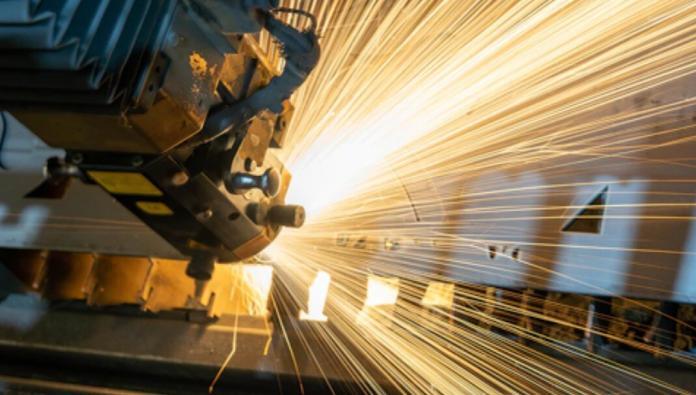The process of manufacturing has undergone many changes over the years. From large and clunky machines to computers, many affordable, sustainable and efficient printing methods have been developed. Today the manufacturing industry is well aware of 3D printing technology. In 3D printing, objects are manufactured using a 3D digital model. With this technology, printing can be done at low costs and in short runs ensuring quality and sustainability. In this article, we will discover why the future of manufacturing will be 3D printing.
3D Printing Today
We are at a stage when 3D printing technology institutions are aiming to create more value from this technology. 3D printing, also known as additive manufacturing, eliminates many factors such as expensive tools and outsourcing parts. Today, there are 6 3D printing processes – Material Extrusion, Powder Bed Fusion (Polymers), Powder Bed Fusion (Metals), Material Jetting, Binder Jetting and Vat Polymerization.
Why 3D printing technology is the future of manufacturing?
#1 Speed
3D printing technology solves one of the most important problems of manufacturers and that is speed. 3D printing involves rapid prototyping in which the design is manufactured and customised in as little time as possible. Before that prototyping was a hectic process for manufacturers. But now manufacturers can develop a prototype in their in-house 3D printers.
#2 Costs
3D printing proves to be one of the most affordable technologies for manufacturers. With a 3D printer, there would be no additional costs for injection molds, casts and other tools and materials that are generally required for traditional manufacturing processes. The traditional manufacturing processes also require higher labour costs which are not involved in the case of 3D printing technology.
#3 In-house manufacturing
3D printing technology can be done in-house which removes the costs of production and outsourcing materials. But what does that entail? It means faster turnaround times, a better quality of products, efficient iterations and much security against industrial thefts. Think of it this way. When manufacturers will be able to create products without any outsourcing, it will be much easier for them to control the quality standards.
#4 Environmental-friendly
3D printing is environmentally friendly which is why many manufacturers are turning heads towards it. The technology helps in reducing the carbon footprint significantly. Moreover, you need fewer items from outsources, everything can be done in-house, which means less transportation and usage of fuels. 3D printing creates few waste materials as compared to the traditional printing methodologies which is again a benefit we all look forward to.
#5 Quality
Another important advantage of 3D printing which makes it the technology we all need is quality assurance. In traditional manufacturing, the designs did not always come through as we wanted but with 3D printing, we can check the designs and standardise quality at every step. This is because, with 3D manufacturing, the product is built step by step.
It is just like baking a cake. We are bringing all the ingredients, mixing them and putting them in an oven. There is no guarantee that our cake would be perfect. It may have problems like air bubbles or it might not bake properly from all the sides. But, if we add every ingredient step by step ensuring the right quantity and quality, we can expect our cake to be of great quality too!
#6 Better products every time
3D printing allows manufacturers to reduce product life cycles. This means manufacturers can bring in a new, better product quickly in the market ensuring a competitive advantage. With 3D printing, manufacturers can demonstrate the products to their customers and investors showcasing the features and benefits. This reduces the chances of misconceptions and ensures transparency. The manufacturers can make changes in the prototypes and ensure that everything is created as per their customers’ and/or investors’ requirements.
#7 Flexibility
One of the major reasons why manufacturers prefer 3D printing is that it gives them the opportunity to create what the traditional methodologies couldn’t. The traditional methods were quite restrictive as compared to the 3D technology. The new, high-tech 3D printers can create anything that fits into their volumes and capabilities. But, with traditional methods, if we have to add a new design we have to provide a new tool, mold or die for the same. Now, with 3D printing, manufacturers can mix and match colours, textures and materials. We do not have to stick to particular materials. There is more scope for creativity and experimentation.
What do the leaders have to say about the future of 3D printing?
Terry Wohlers, Principal Consultant & President, Wohlers Associates, Inc says that custom product manufacturing will become common for companies. There would be a severe decline in the cost of the materials because of the product volumes. Moreover, we can expect faster AM (Additive Manufacturing) machines.
Arno Held, Chief Venture Officer, AM Venture says that by the end of this decade we can expect major changes in how we develop, create and source products. We should expect better quality, lower cost per energy and improved recyclability of products.
Bart Van der Schueren, CTO, Materialise says that by the end of this decade 3D printing will be an essential part of the manufacturing process. There will be a significant performance increase of machines, automated workflows and product designs. They are also anticipating an increase in the quality of prints. Technologies like multi-material printing will also be on the rise this decade.
Wrapping up
The future of the manufacturing industry surely seems to be 3D printed. With different advantages like cost-saving, speed, flexibility, quality assurance, smaller product life cycles, the opportunity of in-house manufacturing and sustainability, 3D printing is making its way into the manufacturing world. Even the leaders are looking forward to better printing standards, designs and lower costs. There is no doubt that this decade will witness the revolution of 3D printing. What do you think? What could be the different challenges in front of the manufacturing industries trying to adopt this technology?









Hello. This article was extremely remarkable, particularly since I was browsing for thoughts on this matter last week.